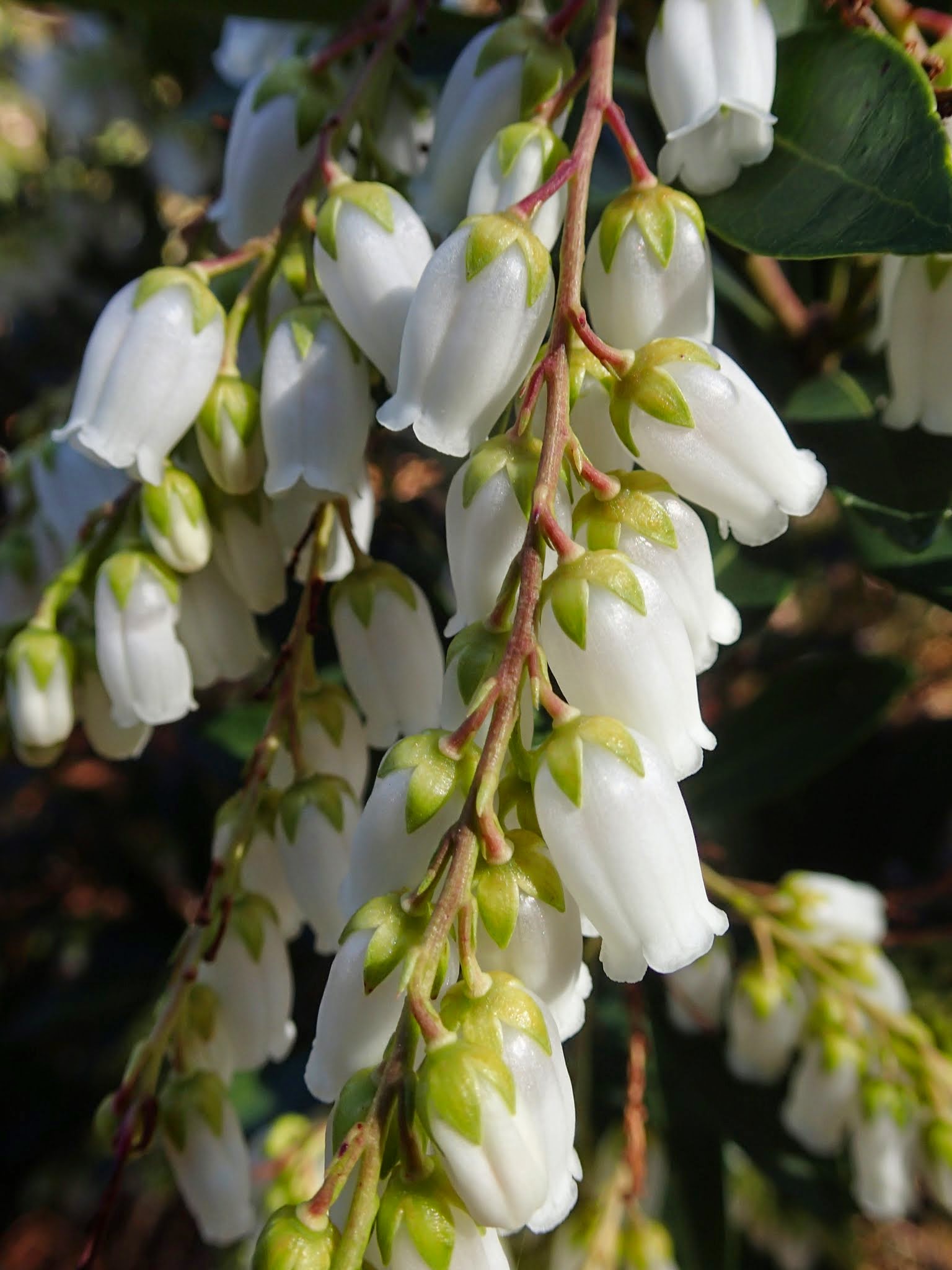Plant This, Not That: Top 10 Privet, Ligustrum Ssp., Alternatives
go.ncsu.edu/readext?980378
en Español / em Português
El inglés es el idioma de control de esta página. En la medida en que haya algún conflicto entre la traducción al inglés y la traducción, el inglés prevalece.
Al hacer clic en el enlace de traducción se activa un servicio de traducción gratuito para convertir la página al español. Al igual que con cualquier traducción por Internet, la conversión no es sensible al contexto y puede que no traduzca el texto en su significado original. NC State Extension no garantiza la exactitud del texto traducido. Por favor, tenga en cuenta que algunas aplicaciones y/o servicios pueden no funcionar como se espera cuando se traducen.
Português
Inglês é o idioma de controle desta página. Na medida que haja algum conflito entre o texto original em Inglês e a tradução, o Inglês prevalece.
Ao clicar no link de tradução, um serviço gratuito de tradução será ativado para converter a página para o Português. Como em qualquer tradução pela internet, a conversão não é sensivel ao contexto e pode não ocorrer a tradução para o significado orginal. O serviço de Extensão da Carolina do Norte (NC State Extension) não garante a exatidão do texto traduzido. Por favor, observe que algumas funções ou serviços podem não funcionar como esperado após a tradução.
English
English is the controlling language of this page. To the extent there is any conflict between the English text and the translation, English controls.
Clicking on the translation link activates a free translation service to convert the page to Spanish. As with any Internet translation, the conversion is not context-sensitive and may not translate the text to its original meaning. NC State Extension does not guarantee the accuracy of the translated text. Please note that some applications and/or services may not function as expected when translated.
Collapse ▲I have written extensively about invasive plant species hiding out under our noses in our gardens and local natural areas. It is up to us to learn to identify those species and work towards removing them to stop their seeds from spreading, but also to give plants we would rather grow there a chance. The Japanese Privet, Ligustrum japonicum, and Chinese Privet, Ligustrum sinensis, have been used in landscapes in the South for more than 100 years and have been a staple for basic foundation and screening planting. So, to help you feel good about removing your invasive plants, here are some replacement plants that can fill that horticultural niche in your garden.
– Aucuba japonica– Non-native- Aucubas are tough plants! They can withstand a lot of shade, and very dry soil (once established). Yet, they come in a variety of shades of green. There are some incredible leaf patterns in the trade in North Carolina that can give you a spot of bright green or yellow for an otherwise challenging landscape spot. These plants are dioecious, meaning they have separate male and female plants, so some cultivars have berries (these are the girls!). Aucubas are susceptible to bacterial wilts, so if you see any growth turning black, remove it immediately.
– Japanese Camellias, Camellia japonica and C. sasanqua– Non-native- Camellias have been used in Southern landscapes for a couple more centuries than Privets! There were specimen shrubs being brought in through the Ports of Charleston and Mobile in the early 1700s. For some reason these plants got a rap as plants for the wealthy; but there are so many varieties and they are more widely grown, we really should give them more of a chance in our everyday landscapes. The broad, shiny leaves are evergreen and thick, and there are a plethora of flower colors. Either Camellia japonica and C. sasanqua will make a sturdy hedge AND produce a colorful show.
– Distylium ssp.- Non-native- There is no common name for Distylium, but don’t let that intimidate you. This plant in the Witch Hazel family, Hamamelidaceae, has been in the horticultural trade for about 20 years and becoming more and more popular. The breeding companies have been doing great things with this group, so now there is one in every possible leaf color: dusty light blue, bright yellow, bright orange, etc. They also come in a variety of habits: wide and spreading or upright and spreading. The flowers are hard to see, but you will detect the light, herbal scent of them when they flower.
– Gardenia thunbergia– Non-native- Gardenias are something folks either love or hate. You cannot argue that they are evergreen and thrive in our climate. As a replacement for the vigorous privets, I am suggesting the species Gardenia thunbergia specifically, as G. jasminoides tends to have smaller leaves and usually doesn’t have the vigor of privet. The leaves of Gardenia thunbergia are broader, shinier and have very distinct veins. The flowers tend to be larger and more fragrant.
– Evergreen Hollies, Ilex spp.- Some native, some not- The Hollies are probably the most diverse alternative for the privets. There is a holly for every garden condition: small or large leaves; smooth or spiky leaves; lots of berries or a few berries; trees or shrubs; deciduous or evergreen. There are species of hollies found around the globe, on most continents. We used them in our landscapes as frequently as privets. Now is the time to give them more of a chance in our gardens.
– Anise Tree, Illicium ssp.- Some native, some not- The Anises are shade-loving (but also sun-tolerant!) evergreen shrubs that prefer a little more moisture around their roots. Their leaves are incredibly fragrant when crushed, though their flowers can have some unique smells. Each species has slightly different growing habits, from upright tree to shaggy shrub. Their flowers can range from white to pink to maroon. NC State breeders have been working on developing more dwarf and more floriferous varieties for the Southern landscape as well.
– Mountain Laurel, Kalmia latifolia- Native- Mountain laurel is pretty special when it flowers. The light pink to deep pink flowers come out in clusters of bell-like buds and open to disk-like flowers. If you poke the flowers the stamens will curl in! These evergreen, upright, round shrubs are tough as nails, but prefer a cooler site in your yard with some sun. If you have an area where the frost settles or a north side that slopes down, this is the plant for that spot! Otherwise, be careful where you place it!
– Wax Myrtle, Myrica cerifera– Native- This is probably the go-to for North American native alternative shrubs for hedge plantings. Wax myrtles are tough plants, hailing from our coastal areas. They don’t mind being in a island in a parking lot or on the edge of a shady yard. They can take poor soils, dry soils, and occasionally inundated soils. The dense habit, fragrant leaves and berries that are desired by birds check a lot of boxes for gardeners. They grow relatively quickly and will fill in any spot.
– Lily-of-the-Valley Shrub, Pieris ryukyuensis ‘Temple Bells’- Non-native- The lily-of-the-valley shrub earns its name! The flowers hang down in great tufts and tassels of blueberry-like flowers. The species and cultivar ‘Temple Bells’ is a more heat-tolerant shrub, and has broader, darker green leaves than your grandmother’s Pieris.

Pieris ryukyuensis “Temple Bells” Close-up by Amanda Wilkins
They flower in the late winter or spring, depending on the weather, and, after they flower, their new growth explodes in another wave of colors, usually green, yellow and red. The shrubs are upright, almost columnar, and slow-growing, in some growing conditions. Don’t expect this shrub to fill in quickly, though it is worth the wait!
– Evergreen Azaleas, Rhododendron ssp.- Non-native- Another staple of the Southern landscape is the evergreen azalea. There are hundreds of species and thousands of named varieties of these types of Rhododendrons (All azaleas are Rhododendrons, but not all Rhododendrons are azaleas). They come in a variety of shapes and sizes, and there is an azalea bloom for every month and season. They tend to have finer leaves, like the Chinese privet, though they can be a little thinner in the canopy. Make sure to read up on the variety you choose to understand its growth habit, shape and size.
Hopefully these plant options will empower you to take the plunge and remove invasive plant species from your garden palette. There are so many incredible plants out there, so don’t give invasives prime real estate in your garden!
Amanda Wikins is the Horticulture Agent for North Carolina Cooperative Extension in Lee County.




